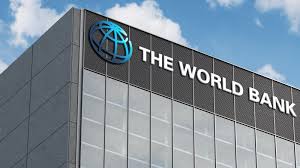World Bank to Support Syria in Energy and Digital Technology
By Kardo Roj
DAMASCUS, Syria (North Press) – The World Bank has expressed its willingness to support Syria in selective sectors, notably energy and digital technology, following rare official engagements with Syrian representatives during the institution’s annual Spring Meetings held in Washington, D.C.
Osman Dione, the World Bank’s Vice President for the Middle East and North Africa, stated via social media on Wednesday that “meaningful meetings” had taken place with Syria’s Minister of Finance, Mohammad Yasser Barniya, and Central Bank Governor Abdulqader Housriya. These marked the first formal interactions of their kind in over a decade.
The meetings come amid growing international discussions on post-conflict recovery frameworks in Syria. Dione emphasized that the discussions focused on “priority areas for recovery and reform,” referencing sectors that could potentially catalyze long-term development without compromising international sanctions or existing legal restrictions.
State-run Syrian Arab News Agency (SANA) reported that the meetings aimed to explore avenues for technical assistance and institutional capacity-building—goals echoed by Syrian finance officials.
Speaking to Syrian media, Finance Minister Barniya said the Syrian delegation’s participation was intended to “revive cooperation with international financial institutions and open channels for technical support and capacity development.”
As part of this renewed dialogue, Barniya announced that the International Monetary Fund (IMF) has appointed Ron van Rooden as its first mission chief to Syria since the start of the conflict in 2011—a symbolic step toward gradual institutional engagement with Damascus.
While neither the World Bank nor IMF has committed to financial aid packages or large-scale projects, experts suggest that this limited re-engagement could pave the way for technical programs aimed at stabilizing specific sectors. Any future collaboration would likely adhere strictly to the parameters of humanitarian support and early recovery, in compliance with international legal frameworks.
The emphasis on energy and digital infrastructure aligns with Syria’s urgent needs. After over a decade of war, the country’s energy grid remains fractured, and access to reliable electricity is sporadic. Digital infrastructure, meanwhile, is seen as essential for modernizing public services, improving financial systems, and fostering economic inclusion.
While Syria remains politically divided, with varying degrees of governance across its territories, international observers note that targeted development initiatives—especially in fields that transcend political lines—could serve as a foundation for long-term economic resilience.
These developments unfold as northeast Syria, governed by the Autonomous Administration of North and East Syria (AANES), continues to stabilize regions liberated from the Islamic State (ISIS) with support from the U.S.-backed Syrian Democratic Forces (SDF). The region has made incremental progress in rebuilding education, electricity, and telecommunications infrastructure—areas that could potentially benefit from broader development partnerships in the future.
Although AANES officials were not part of the Washington meetings, regional leaders have consistently called for international engagement that includes all Syrian territories equitably. Observers argue that sustainable recovery requires a comprehensive approach involving all communities and governance structures.
While the World Bank’s announcement remains preliminary, it signals a potential shift in international readiness to support sectoral recovery in Syria—albeit cautiously and within narrow parameters. Should technical cooperation materialize, it may offer a foundation for broader developmental engagement down the line, provided political and legal conditions evolve.
As Syria’s humanitarian and economic crises persist, the engagement of global financial institutions—even in limited form—may play a role in rebuilding critical systems and restoring livelihoods in both government-held and autonomous regions. Whether such cooperation can be expanded or institutionalized remains a question closely tied to the evolving dynamics of Syria’s conflict and diplomacy.

